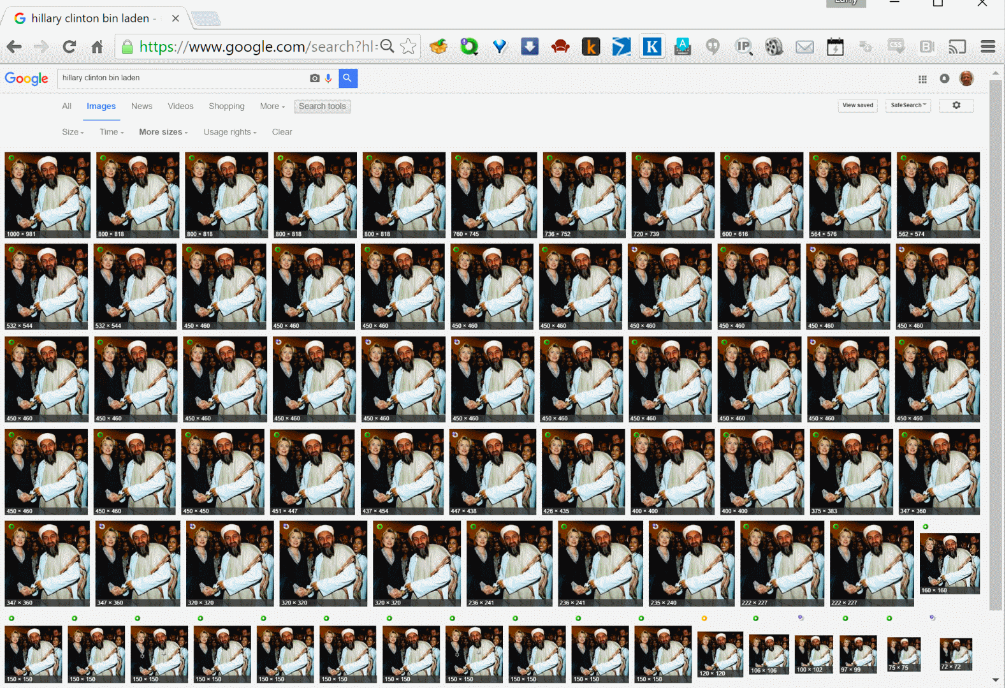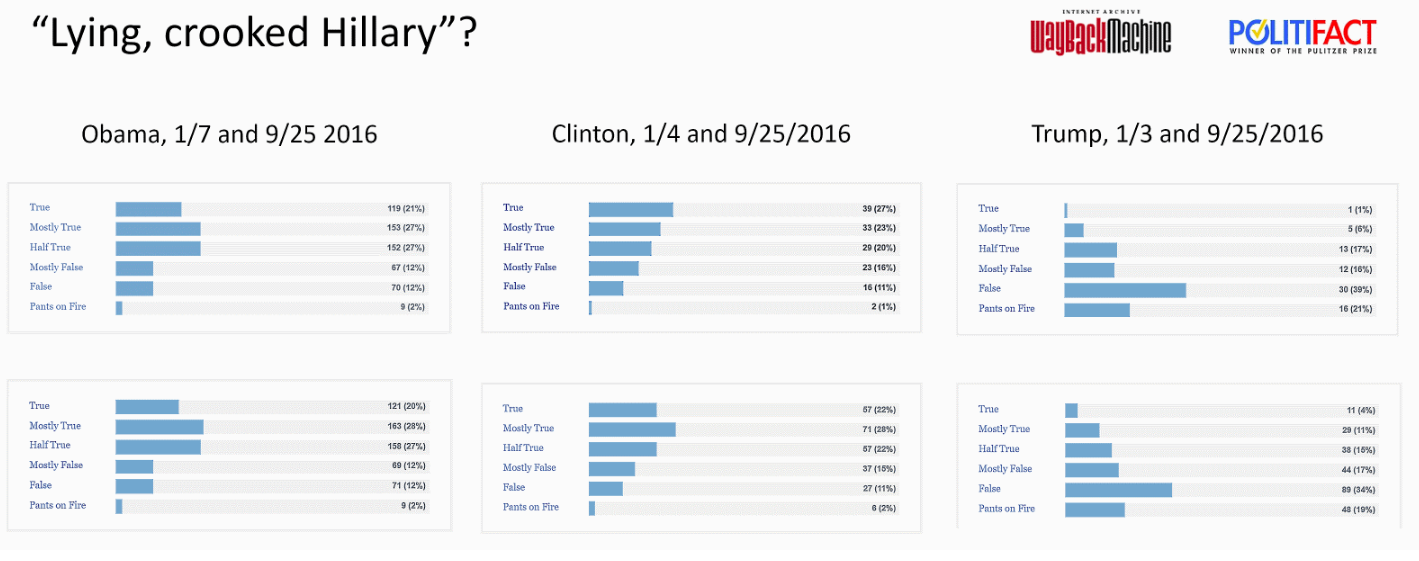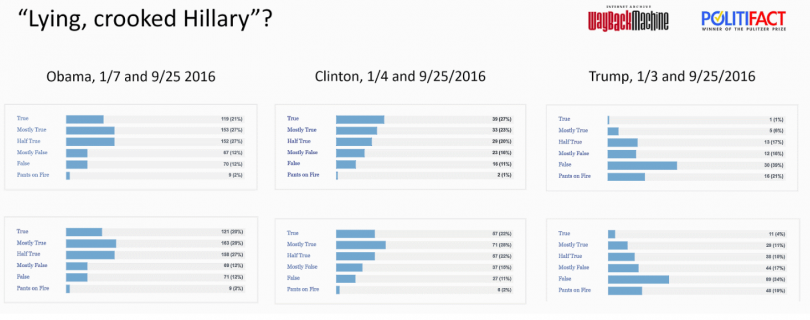aNewDomain — These days I have to keep reminding myself that we are in the early days of the Internet as a political medium. But it’s still depressing.
We’re living in the age of post-truth politics, to borrow William Davies’ term for it. And millions of Americans, obviously, are having trouble making sense of it all.
Case in point: Search for images of Hillary Clinton and Osama bin Ladin on Google and this is what you get:

The Clinton-bin Ladin image is faked, obviously. But a morass of Trump supporters either believe its real or don’t care, evidenced by the fact they are posting it all over the place.
Democrats are guilty of this kind of thing, too, of course. Remember this shot of President George W. Bush holding a book upside down? It never happened either.

As distrust of mainstream media grows during this election cycle, more and more people may be wondering where they can possibly go to actually get to the truth.
The answer is Politifact. The Pulitzer Prize-winning site, which is about as non-partisan and independent as information services can get, monitors all political statements, ranking them on a six-level scale ranging from True to Pants on fire. The ratings are:
True – The statement is accurate and there’s nothing significant missing.
Mostly true – The statement is accurate but needs clarification or additional information.
Half true – The statement is partially accurate but leaves out important details or takes things out of context.
Mostly false – The statement contains an element of truth but ignores critical facts that would give a different impression.
False – The statement is not accurate.
Pants on fire – The statement is not accurate and makes a ridiculous claim.
Here’s a summary, for example, of how U.S. President Barack Obama, Hillary Clinton and Donald Trump stacked up in terms of truthfulness from January to late September 2016.
 From the chart, which I created using current Politifact data and what I could find on the Wayback Machine, you can see Clinton is a bit more honest than President Obama and that she lies a lot less frequently than Trump. You also can see that, while the ratings of Obama and Clinton have changed little since January, Trump has been telling the truth more often of late. But Trump is telling lies about half the time, Politifact shows.
From the chart, which I created using current Politifact data and what I could find on the Wayback Machine, you can see Clinton is a bit more honest than President Obama and that she lies a lot less frequently than Trump. You also can see that, while the ratings of Obama and Clinton have changed little since January, Trump has been telling the truth more often of late. But Trump is telling lies about half the time, Politifact shows.
Look. It doesn’t take a genius to see just how dramatically the Internet has changed political campaigns, just as newspapers, radio and television did before it. The Internet allows the circulation of all kinds of misstatements and out and out lies, not just by the candidates, but also by their most vehement supporters.
If that’s not post-truth politics, I don’t know what is.
If there’s a silver lining to this black cloud, it’s that the Internet also enables archiving and easy retrieval of the things candidates say. Politifact, to its credit, has moved to take advantage of that and produce a service that even someone who distrusts the “lies of the liberal media,” as Trump has put it, can get — and in a non-partisan way.
As Politifact and other services like it evolve, the Internet may well emerge as the democratizing medium its pioneering creators once envisioned. Sadly that may take awhile, just as it does for all new mediums.
Check out the following “Ike for President” TV ad that ran in 1952. You get my point?
For aNewDomain, I’m Larry Press.
A previous version of this article ran on Larry Press’ blog earlier this fall. Read it here. Ed.













